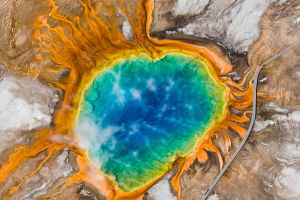The Kuiper Belt, an expansive region beyond Neptune’s orbit, represents a vast and intriguing frontier in planetary science and solar system exploration.
This distant zone, sometimes described as a doughnut-shaped ring of icy bodies, holds remnants from the early solar system, including dwarf planets, primordial objects, and complex binary systems.
Structure and Composition of the Kuiper Belt
Extending roughly from 30 to 55 astronomical units (AU) from the Sun, the Kuiper Belt is home to thousands of small bodies composed mainly of frozen volatiles such as methane, ammonia, and water ices. Its shape is more accurately described as a thick torus rather than a flat belt, stretching about ten degrees above and below the ecliptic plane.
This region displays a sharp dynamical structure shaped extensively by Neptune’s gravitational influence, which creates stable resonant orbits as well as gaps similar to the Kirkwood gaps in the asteroid belt.
Kuiper Belt objects (KBOs) are broadly categorized into two populations based on their orbital properties: the “dynamically cold” population with nearly circular, low-inclination orbits and the “dynamically hot” population characterized by higher inclinations and eccentricities.
These two groups differ not only in their orbital characteristics but also in their surface colors, compositions, and size distributions. The cold population tends to be redder, brighter, and contains a higher fraction of binary systems, implying formation in situ and limited disturbance by Neptune’s migration.
Notable Kuiper Belt Objects and Binary Systems
Several dwarf planets reside within the Kuiper Belt, most famously Pluto, along with Eris, Haumea, and Makemake. These bodies often possess complex satellite systems. For example, Pluto is accompanied by five moons, including Charon, with which it is tidally locked. The diverse moons and binary pairings among KBOs are scientifically invaluable, hinting at ancient collisional and gravitational histories that shaped these objects.
NASA’s New Horizons mission flew by the Kuiper Belt contact binary Arrokoth in 2019, revealing a flattened, double-lobed object described as resembling a “red snowman”—the most primitive object ever explored directly by spacecraft. This encounter dramatically expanded knowledge about the primordial conditions of the solar system beyond Neptune.
Influence of the Kuiper Belt on Solar System Evolution
The Kuiper Belt’s dynamical structure offers compelling evidence for the migration of the giant planets early in the solar system’s history. Computer models suggest that Neptune and Uranus formed closer to the Sun and later moved outward, perturbing and scattering small bodies.
This process not only shaped the present-day Kuiper Belt but also contributed to populating other solar system regions such as the scattered disc, Jupiter trojans, and irregular planetary satellites.
Despite its vast volume, the Kuiper Belt’s mass is relatively small, with estimates around 1-2% of Earth’s mass combined. This scarcity of mass poses interesting questions about how large KBOs formed, suggesting either a more massive early belt that lost material or accretion via direct collapse of pebble clouds rather than gradual collisional growth.
Perspectives from Experts on the Kuiper Belt’s Significance
Dr. Alan Stern, principal investigator of the New Horizons mission, has remarked on the importance of Kuiper Belt studies: “The Kuiper Belt is a fossil relic from the formation of the solar system.
Studying it reveals the processes that led to the birth of planets and sheds light on the building blocks of life-essential compounds.” His expertise underscores the region’s role as a repository of early solar system history and organic materials.
Planetary scientist Dr. Sarah Stewart emphasizes the Kuiper Belt's role in understanding planetary dynamics: “The Kuiper Belt is a natural laboratory for investigating how planets migrate and how that migration sculpts the small body populations across the solar system. It challenges the notion of a static solar system and reveals dramatic early migrations.” Stewart’s insights highlight the belt’s dynamic influence on planetary architecture.
Beyond the Kuiper Belt: The Scattered Disc and Oort Cloud
Beyond the Kuiper Belt lies the scattered disc, a more distant and dynamically excited population of icy bodies with eccentric, often highly inclined orbits influenced by Neptune’s gravity. These distant objects are thought to be the source regions for many short-period comets observed in the inner solar system.
Farther still, the hypothetical Oort cloud constitutes a spherical shell of icy debris at the outermost reaches of solar influence. While direct evidence remains elusive, the Oort cloud is conceived as the reservoir of long-period comets and represents the boundary zone where solar and interstellar forces interact.
The Kuiper Belt is a window into the early solar system’s formation, a repository of ancient icy bodies preserving clues about primordial materials and planetary migration. Its diverse populations, satellite systems, and influential dynamics offer a profound understanding of the solar system’s evolutionary history. Exploring the Kuiper Belt and its beyond lies at the frontier of planetary science, opening pathways for unraveling the origins of our cosmic neighborhood.


